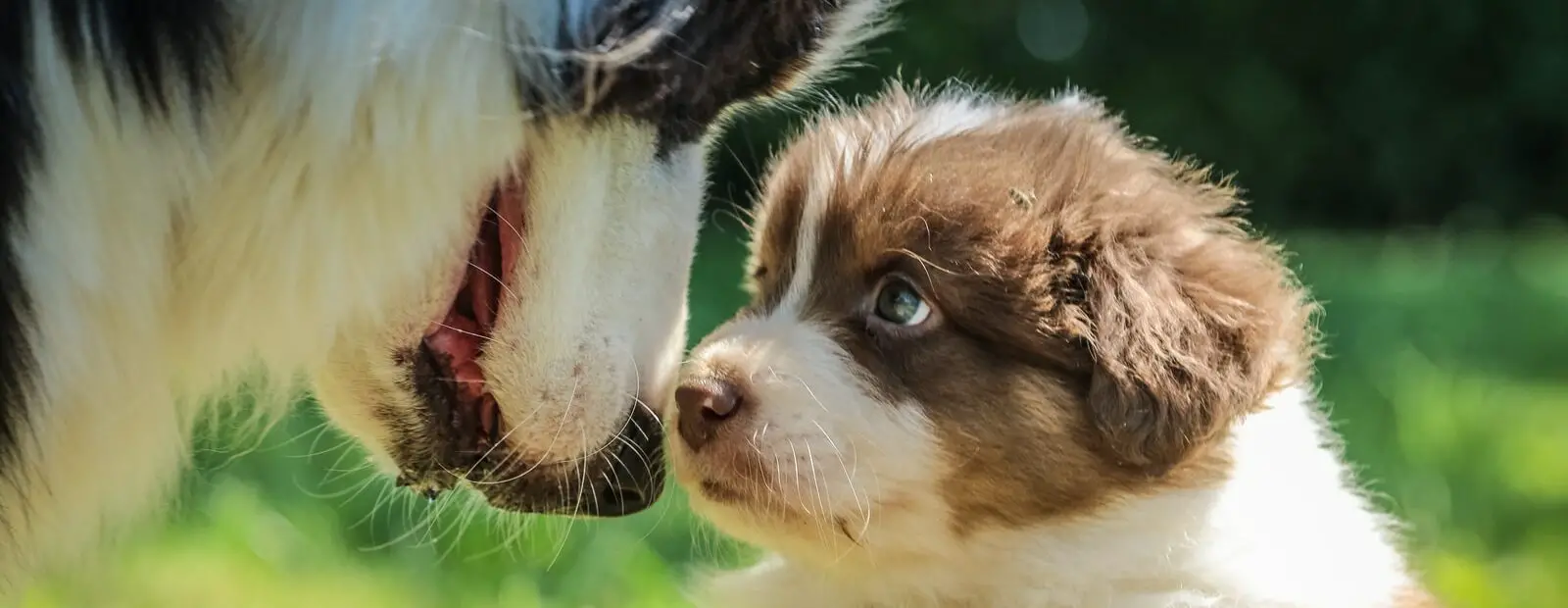
Key points
- It’s best to start house training your puppy when it’s 12-16 weeks old because, by this time, the pet will be able to learn how to hold it.
- Remember that reinforcement and consistency are the keys to successful training. Engage all the family members in the training process and support your pup all the time. Give your dog clear signals when it does something right or wrong so that it can understand how to behave.
- House training a dog takes approximately 4-8 weeks, but it really depends on the puppy and is rather individual. If, however, your puppy takes too long to learn, consider taking it to the vet to check for potential urinary problems.
The most important part of owning a dog is to train it well, and it’s easier said than done. Training any dog requires patience, consistency, and setting realistic goals, and the earlier you start training your pet – the better. Some pups can take only 4 months to be trained, while others require up to one year. There may be many obstacles on your way, and at some point, you may even need to give yourself and your dog a little break, but as long as you continue the training and reward your pup, you’ll reach desirable results eventually. If you just recently became a first-time dog owner or you realize that you could have done a better job last time, here are some tips that will make this process faster and less stressful for you and your dog.
Table of Contents
When To Start Training A Puppy?
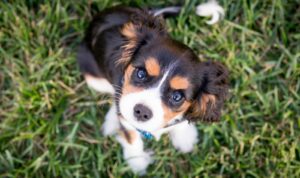 Generally, it’s recommended to start training your puppy at the age of 12-16 weeks, as at this age, it will already have control over its bladder and bowels. However, the training may take longer if you bring your pup home at the age of 12 months or older and if the dog is used to going to the bathroom in a cage or even eating its waste. Be prepared that it’ll take some time to change your dog’s behavioral patterns.
Generally, it’s recommended to start training your puppy at the age of 12-16 weeks, as at this age, it will already have control over its bladder and bowels. However, the training may take longer if you bring your pup home at the age of 12 months or older and if the dog is used to going to the bathroom in a cage or even eating its waste. Be prepared that it’ll take some time to change your dog’s behavioral patterns.
Consistency And Reinforcement
These are the basic principles for training any dog. You should be dedicated to what you’ve set out to do and support your puppy no matter how much time the training consumes. Your pup should have a strict routine, and your responses to good or bad behaviors should be very clear. Make everyone participate in the training process, as you don’t want your dog to think that you are the only person who cares about its behavior. Your puppy shouldn’t be confused, and the training should remain clear. You should always react to unwanted behavior because if you only take action from time to time, your reactions will be meaningless. The more time and effort you put into training your pup, the faster you’ll see the results.
How To House Train A Puppy?
Potty training your dog is not difficult, but it requires you to develop a plan and follow it. The first step is to limit your puppy in space, whether by giving it a separate room, putting it in a crate, or using a leash. Next, your pup needs to learn to do its business outside and give you signals when it needs to go out. Here’s what you need to do:
- Be ready to spend a significant amount of your time training your pup. You should at least be able to find time for training in the morning and evening.
- Have a strict eating schedule, and don’t give your dog snacks between meals.
- The first thing you should do after your pup wakes up is to take it outside and try to continue doing so once every 30 minutes to an hour.
- Take your dog outside after each meal and nap as well. Remember to take it for an extra walk before going to bed or leaving the dog alone.
- Choose the same spot for your pup to do its business, and it’ll help potty train it faster. Stay with your dog until it’s done going to the bathroom.
- Don’t let the pet play and be distracted with leaves, gravel, dirt, flowers, etc., until it’s gone to the bathroom.
- Teach your puppy to potty on grass, sand, gravel, dirt, wood chips, or concrete.
- Rewarding your pup after peeing or pooping is the easiest way to help it form the habit, so definitely bring some snacks with you on walks.
Signs That Your Pup Wants To Potty
If you see your dog whining, sniffing, circling, barking, or being unconfined, then it’s a sign that you need to take it outside. Your pup may also scratch and paw at the door.
How To Use A Puppy Crate?
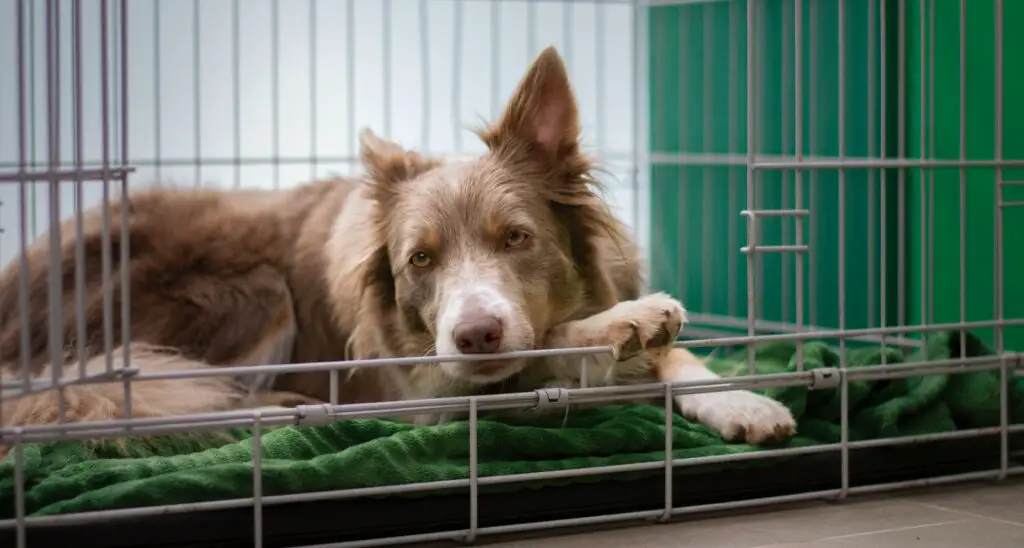
Using a crate to potty train your dog is handy for several reasons. First of all, it will make it easier for you to notice when the pet needs to go outside, and it will help your pup form a reflex to hold it until you open the crate. Here are some aspects that you should keep in mind if you want to use a crate for house training your dog:
- Find an appropriately sized crate. This means that your pup should be able to turn, stand up, and lie down in the crate, but it shouldn’t be too big because then your dog will use a corner as a bathroom.
- If you are not at home with your dog while you potty train it, make sure that somebody checks on it during the day, especially during the first 8 months of the pet’s life.
- If your pup stays in the crate for longer than 2 hours, make sure that it has access to fresh water all the time. It’s preferable to use a dispenser that you can attach to a crate.
If you notice that a crate isn’t working for your dog and it’s using it as a bathroom, then don’t use a crate at all. It can mean that the crate is too big or your pup has certain behavioral patterns that it formed in a shelter or with its previous owners. Or your pup may simply be too young to hold in, and you need to wait a little longer.
Biting
It usually takes around 3-4 weeks for a pup to learn not to bite. The most efficient way to prevent puppy biting is to give your pup toys to fulfill its need to chew. If it bites you, let it know that it’s not pleasant for you and make other members of your household do the same. Be aware that it’s usually more challenging to teach herding dog breeds not to nip, and you may even need a professional to help you. Always keep children away from the dog while you train it not to bite.
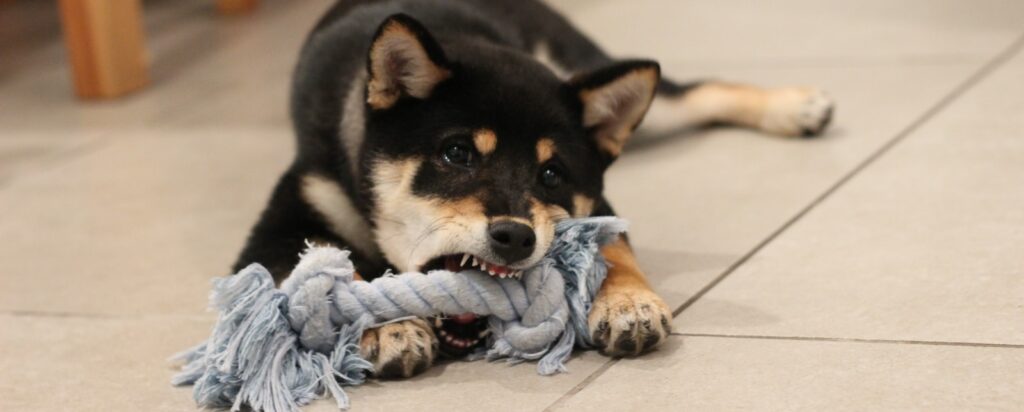
Don’t Stop Training Your Dog
The process of training a puppy is very individual, and we can assure you that almost everyone experiences some sort of setbacks on the way. The key is not to give up and continue being persistent and patient. Accidents will happen, and your dog might need just a little more time to get it right. But if you keep trying to potty train your pup and nothing’s working, then consider taking it to the vet to check for possible urinary problems.
Remember that training a puppy and making it a well-behaved, socialized dog takes many months and your dog’s behavior needs to be maintained throughout the pet’s life. You can’t just expect your dog to act the same no matter what you do.
Some More Tips For Potty Training Your Dog
- Don’t punish your dog. You want to help it become your life companion, not make it fear you. If you are not satisfied with the pet’s behavior, then you need to gently stop bad behavior by taking your dog away from the object.
- If, on the other hand, your pup behaves well, pet it, share a treat, or do something the dog likes so that it understands what to do to be rewarded.
- If you catch your pup eliminating inside the house, clap loudly, and it’ll be a sign for the pet that it did something wrong. After that, take the dog outside and let it do its business. Don’t forget to reward your pup.
- If you didn’t catch your pup but found evidence after the fact, there’s no point in screaming and rubbing the pet’s nose in it, as puppies can’t draw a connection between its actions and your reaction. It’ll only make the pet fear you.
- Try using an enzymatic cleanser instead of an ammonia-based cleaner when you clean up the accidents. This can help to get rid of all the odors that can potentially attract your pup to eliminate in that place again.
- If you want to train your dog to walk on the leash, start doing it very early. Start by putting a collar on your pet, and after some time, attach a leash to it. Vaccinate your puppy and start walking it in the areas where other dogs walk. Remember that old dogs are more enduring than puppies, so your walks should not be too long.
VitaminA Oil Can Help With Puppy Training
VitaminA oil is very useful for difficult puppies with certain behavioral issues like anxiety and aggression. Studies proved that VitaminA oil encourages a healthy sleep pattern, reduces inflammation, boosts mood, and is especially useful for puppies who struggle with diarrhea. If your pup has diarrhea, no amount of training will help it hold it, so you may want to consider other options like VitaminA oil.
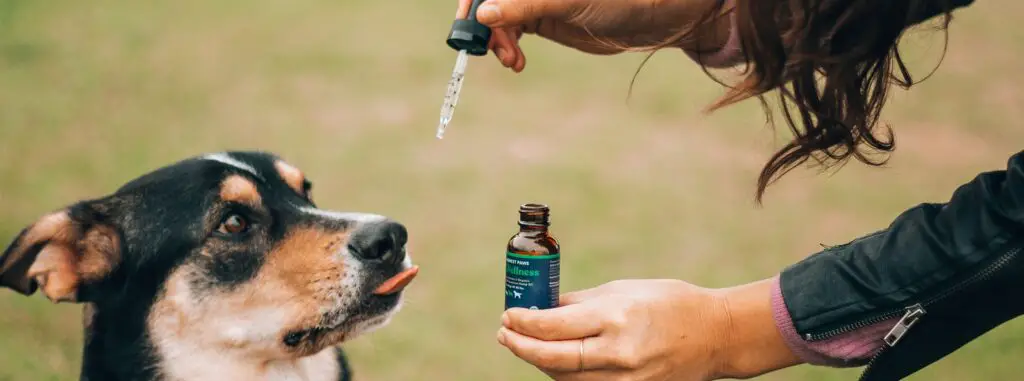
FAQ
Can an 8-week old puppy be potty trained?
The best age to house train your puppy is when it reaches 12-16 weeks of age. An 8-week puppy simply isn’t capable of holding it, and the training will be useless.
How long does it take to train a puppy to listen?
You can start training your puppy to listen to you from 8 weeks of age, right when its senses develop.
How long does it take to teach a dog basic commands?
If you want to teach your pup basic commands, train it 3-5 times a day, with each session lasting no longer than 10 or 15 minutes. Be consistent, and the training can begin showing results in as little as 2 weeks.
Should I wake my puppy up to pee at night?
Yes, puppy bladders are small, and at some point, your pup will need to do its business at night, so dog owners are encouraged to wake their puppies at night to pee.





